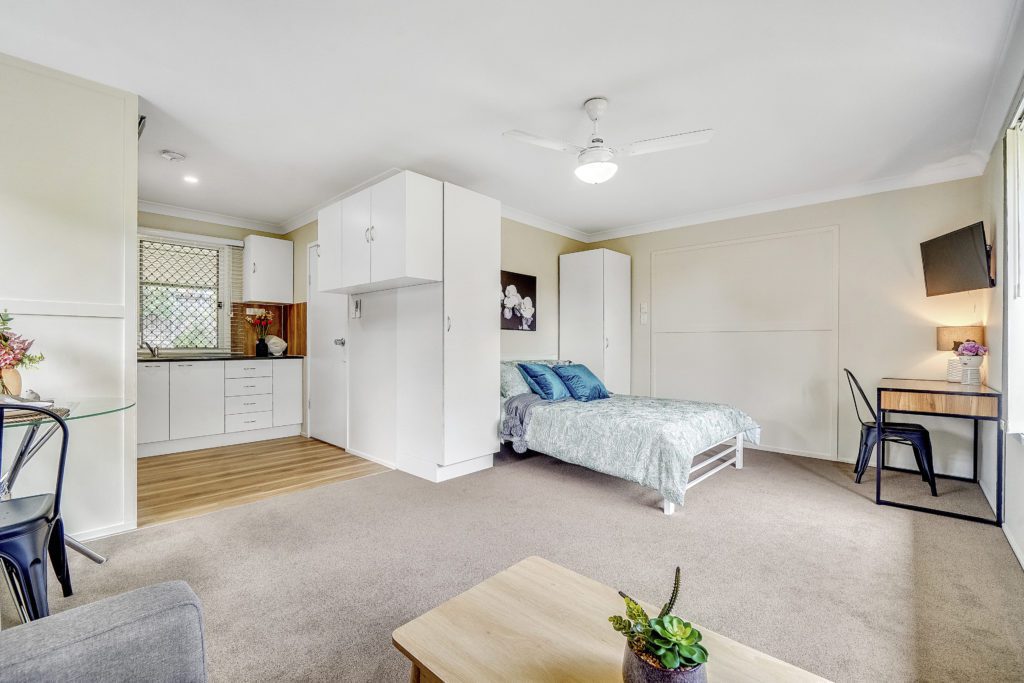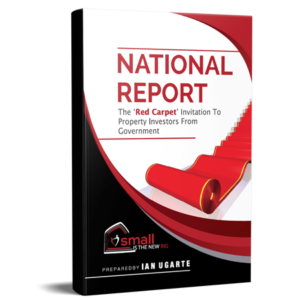There’s a misconception out there that Australian property investors are uber-rich, greedy landlords, with property portfolios the size of country towns. But who are Australian property investors really?
The truth is, they are your local butcher, the baker, the school teacher, the hairdresser, blue and white collar workers, and everyone in between. And they own 1-2 investment properties on average.
WATCH my interview with Ticker TV‘s Adrian Franklin below as I reveal who micro-investors really are, and why they need to be cut some slack by the Federal Government.
TRANSCRIPT:
Adrian: Okay. Our next guest wants to debunk the myth that landlords are these big conglomerates and says the reality is actually the majority are average people with regular day jobs with around one to two investment properties. Ian Ugarte is here to tell us more. Welcome to Ticker, Ian. How are you today?
Ian Ugarte: Great. Thanks, Adrian. Thanks for having me back on.
Adrian: Yeah, absolutely. So let’s get into this. You talk about the triple whammy of government neglect. What are you referring to here exactly?
Ian Ugarte: Yeah, I mean the three things that micro-investors have been hit by is that first, they didn’t qualify for the HomeBuilder grant because they are investors. Secondly, the New South Wales government has left them out of the proposal in the new state environmental planning policy to create affordable housing, and then the New South Wales government then went instead [inaudible 00:00:50] extending the moratorium on rentals, affecting the micro-investor again. And they’re getting hammered from all angles and there’s a much better way to make decisions without creating more suffering for those micro-investors right now.
Adrian: So how do you think the HomeBuilder grant should be extended and what impact would this have, do you think, on stimulating construction and housing affordability more generally?
Ian Ugarte: Yeah. I think that the HomeBuilder grant was supposed to stimulate the construction sector, but all it did was those people that were looking at building their own home or renovating their home substantially at $150,000 plus, which is a huge renovation, were the only people that were benefiting from it and were going to do it anyway. And the micro-investors were left out. Now the master builders have said, “We need to extend this.” And I agree with that, but nobody is talking about the micro-investor and how we can actually make a better move.
So what should happen is, there are 500,000 Australians that own more than two properties. If we took one of those investment properties and convert it into micro-apartments, where out of one house, we could create four micro-apartments. They’ve each got their own private bathroom, a bedroom, and a kitchenette. 500,000, times four micro-apartments, equals 2 million brand new front doors. And if the government matched dollar for dollar $25,000 from the government, $25,000 from the investor, they can convert those properties really quickly.
Now, what would you prefer? $3.7 billion over four years for 30,000 homes or no extra cost to the taxpayer to produce 2 million homes in one year. This creates such a better outcome and protects the investors and essentially pandemic proofs them from anything happening in the future, while residents get a better outcome as well.
SCROLL DOWN to find out why I think micro-investors are being penalised by the government and how you can become a micro-apartment investor.

Adrian: Yeah, well said. So how have micro-investors been overlooked by New South Wales’s proposed policy? And what does this mean, do you think?
Ian Ugarte: Well, the proposal eliminates micro-apartments currently allowed close to the city, where there are services, close to families, where there are jobs, and where those micro-investors currently own the property. They propose to scrap the micro-investors out of the marketplace, completely, give large institutional investors like community housing providers, the ability to create a minimum of 10 rooms, so effectively the old-style boarding house, in massive new developments on the fringe suburbs of those metro areas. And this creates a ‘haves and ‘haves nots’. Essentially it didn’t work in Macquarie Fields, so it’s not going to work now.
And we know that community housing providers are slow to the market. They’re not great custodians of government money. And this is just ‘mutton housing commission dressed up as lamb’. This will isolate people at a time, particularly right now, where we need more connection and getting together. Micro-investors can be very nimble, very quick to market and within two weeks create four to five new front doors out of their existing properties. And so why would we eliminate them out of the housing mix? It just makes no sense at all, Adrian.
Adrian: So let’s talk about the changes that you think should be made to address this triple whammy as you call it. What are you thinking? What changes would you like to see?
Ian Ugarte: Well, extend the HomeBuilder grant to be able to include investment properties and particular aim at the affordable housing market. I think that we should retain the existing New South Wales SEPP allowances for micro-investors in low-density land, to be able to create some really great outcome rather than sticking people out in the fringes.
And then look at the consultation. Making decisions to extend moratoriums and further hurt investors should be made with the decisions of what is the knock-on effect by making a decision like this right now. So whichever way you cut this cloth, there are 80% of the property owners in the market that are being disadvantaged at every turn by multiple levels of government. And this affects all micro-investors who own investment properties, and it could be any person. It could be a parliamentarian than own properties that gets fixed, a local butcher, or that student or single person that busted their bum to get a deposit to buy an investment property and now they’re getting treated so harshly. And this affects everyone from the investor to the resident and the government, too. If we get this right, everybody will have somewhere that is clean, safe and a place they can call home. And that’s a win for the whole community.
Adrian: That’s well said, I love your energy and your passion and clearly the experience and the information that you have. Thanks so much for your time. Where can we head? I know you’re the co-founder of Small is the New Big. Should we jump online and type that in?
Ian Ugarte: Yeah, absolutely sitnbdev.wpengine.com is where you’ll find lots of information about exactly what I talked about today. And again, I appreciate having me on. It really makes a big difference, to me being able to get the message out there.
Adrian: Absolutely, mate. And we’ve got to mention the background there. It’s one of the best backgrounds we’ve had so far on Ticker, so congrats to you.
Ian Ugarte: Awesome. Thanks mate.
Adrian: Good stuff.
WANT MORE: Learn how you can invest in micro-apartment conversions and earn 2-3 X typical residential rents in my Positive cash Flow Live Webinar HERE





